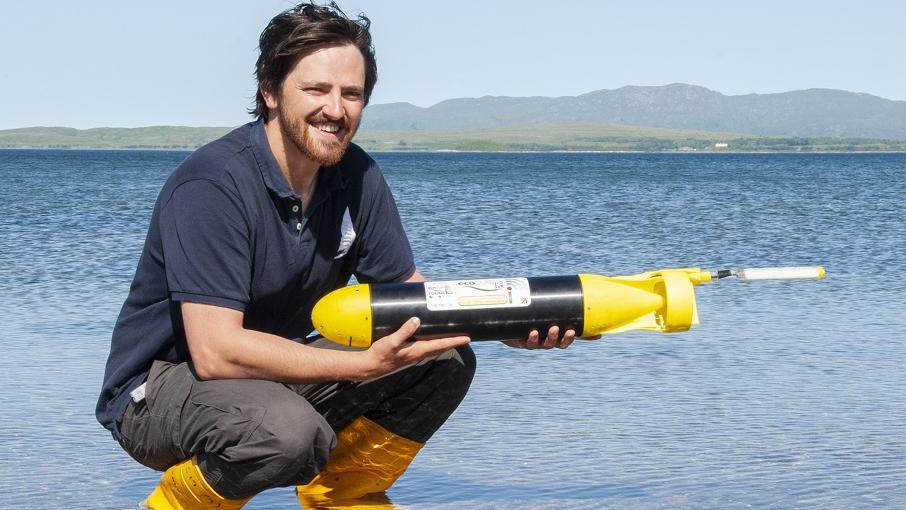Scientists send robots to study melting glacier

The robots include machines that can operate underwater
- Published
A team of Scottish and Norwegian scientists are sending robots to the face of a melting glacier to take samples.
The work is too dangerous for humans to do due to the risk of of huge chunks of ice breaking off - a process called calving - and collapsing on them.
The team are examining the Kronebreen glacier in Kongsfjorden in Norway's high Arctic.
The robots, which include an autonomous boat, a submarine and drones, are being used to measure freshwater run-off as the ice melts.
They are also assessing how the freshwater interacts with the saltier sea water coming into the fjord from the North Atlantic.
Scottish and Norwegian scientists are working on the research
Oban-based Scottish Association for Marine Science (Sams), UiT The Arctic University of Norway, the Norwegian Polar Institute and University Centre on Svalbard are collaborating on the research.
Lead scientist Prof Finlo Cottier, of Sams, said: βFjords are the connection between the changing ocean and our rapidly melting northern glaciers.
"The transfer of heat and water at these points, often just a few kilometres wide, are therefore extremely important in understanding how climate change is impacting our ocean.
'Hostile and remote environment'
βWe need to know much more about the fresh water coming into the ocean: How much is there? Where does it end up? How does it move?"
Prof Cottier said it was too dangerous for scientists to go into "such a hostile and remote environment with a boat".
He added: "Not only is there a risk of falling ice, but large-scale calving causes huge waves, so it is a dangerous place.
"That is where the robotic systems come into their own, working at the front line of Arctic science.β
The science mission is due to run for seven days.